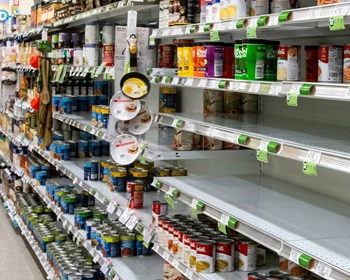Does That Empty Shelf Mean There’s a Product Shortage?
Jan 4, 2023
By Matt McKinney, Manager, Communications, FMI

A couple months ago, FMI was approached by a federal agency for our partnership in educating consumers about a common but little-known industry practice called stock keeping unit, or SKU, rationalization. The goal was to provide information that would help grocery shoppers understand why they might be seeing empty shelves at their supermarket and why those bare spots in the aisles might not necessarily mean there’s a product shortage. Not being steeped in the finer details of inventory management myself, I quickly had to get up to speed on this process that happens behind the scenes at practically every retailer across the country.
Fortunately for me, FMI’s industry relations team has a wealth of knowledge and a deep bench of experience when it comes to the food industry’s operational processes and offered me their assistance through a crash course on SKU rationalization – which I now know is a process by which food retailers and manufacturers manage their inventories to be able to offer their customers the most in-demand products or create shelf space for new and innovative items.
In essence, every size and variety of every product a retailer sells has a unique number called a stock keeping unit, or SKU. These numbers are unique to each company, so even the same product sold at two different businesses will have different SKUs. Each company is then able to accurately and efficiently track every single piece of their inventory so they know which products and varieties are in high demand. It also allows retailers to identify products that aren’t selling well and adjust their product offerings to better reflect what their customers want, or perhaps make room for a new product to gauge shopper interest. Sometimes, this results in empty spots on the shelf as retailers make the transition from stocking one product to another.
SKU rationalization also factors into manufacturer decision-making. Perhaps a producer will reduce the number of sizes or different varieties of the items they make – for instance, different flavors of breakfast cereal, or the regular size versus the family size package. Manufacturers sometimes make these decisions because of low consumer demand, or to shift their production lines to more popular products, or when they need additional capacity for temporary seasonal products like pumpkin-spiced items.
Because this is a complex practice, we realized we needed to produce a nifty animated video explaining this entire process in a light and digestible way – everything from what SKUs are to how and why rationalization is a normal part of the way the food industry does business to best serve customers. So, the next time a customer asks why their favorite product is missing, you can be armed with this video as one example of why that might be the case!
Legal Disclaimer:
EIN Presswire provides this news content "as is" without warranty of any kind. We do not accept any responsibility or liability for the accuracy, content, images, videos, licenses, completeness, legality, or reliability of the information contained in this article. If you have any complaints or copyright issues related to this article, kindly contact the author above.
